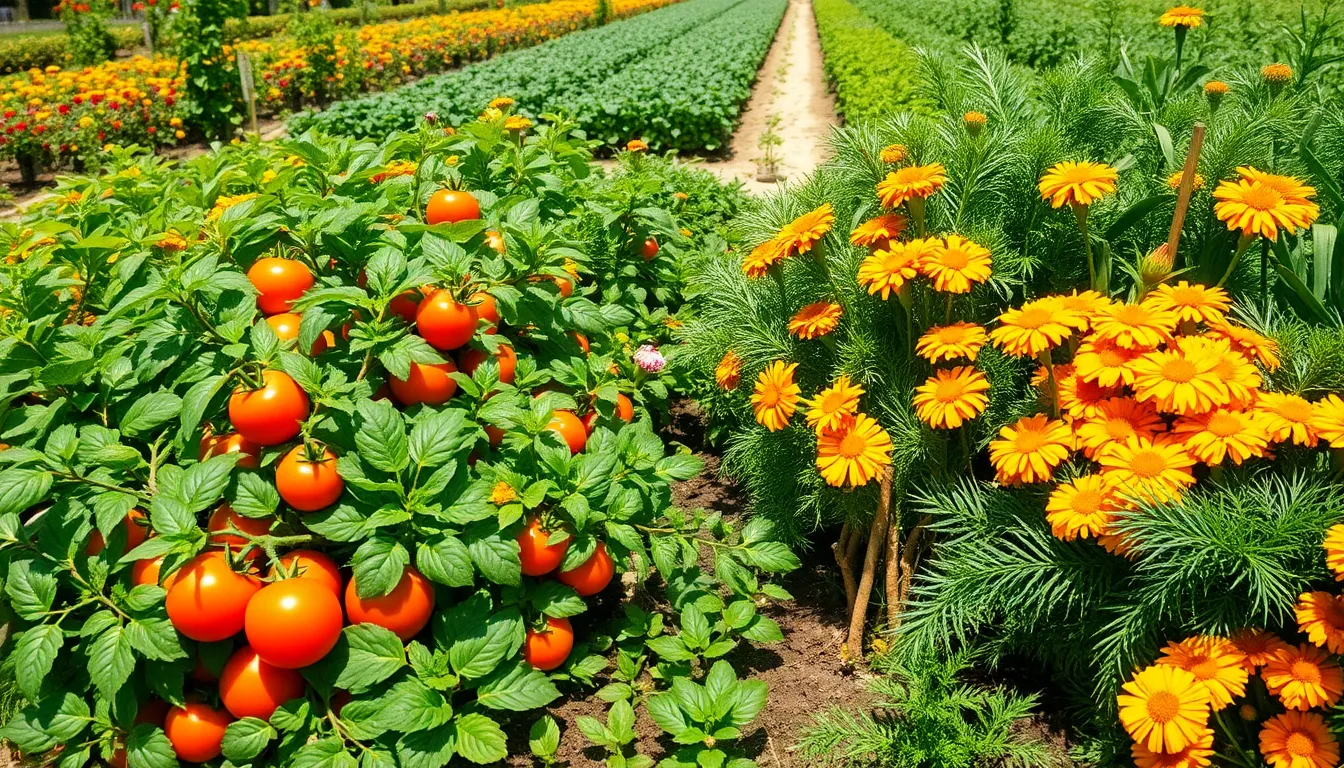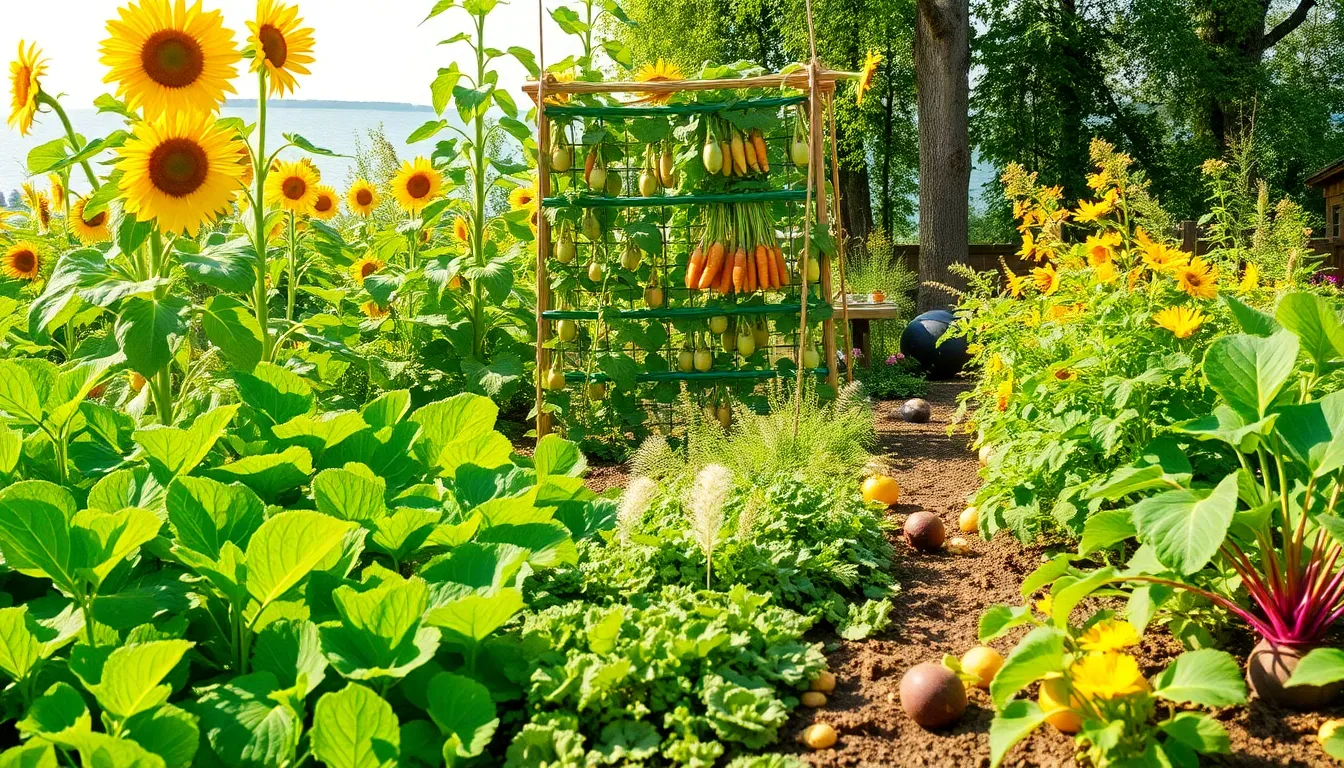In the vibrant world of vegetable gardening, there’s a time-tested technique that promises to elevate your harvest and enrich your garden ecosystem: companion planting. Whether you’re just starting your gardening journey or have years of experience under your belt, understanding the symbiotic relationships between plants can revolutionize the health and yield of your vegetable patch. This method isn’t just about planting seeds; it’s about fostering partnerships that flourish and create harmony in your garden space.
Companion planting is not merely a gardening trend but a practice rooted in ecological science and wisdom. As you delve into this rewarding technique, you’ll discover how certain plant combinations can deter pests, enhance growth, and even improve flavors. This article will guide you through the myriad benefits of companion planting, offering practical tips and insights that cater to both novices and seasoned gardeners. Prepare to unlock the secrets of plant partnerships that will transform your garden into a thriving, self-sustaining haven.
Boosting Vegetable Growth Naturally
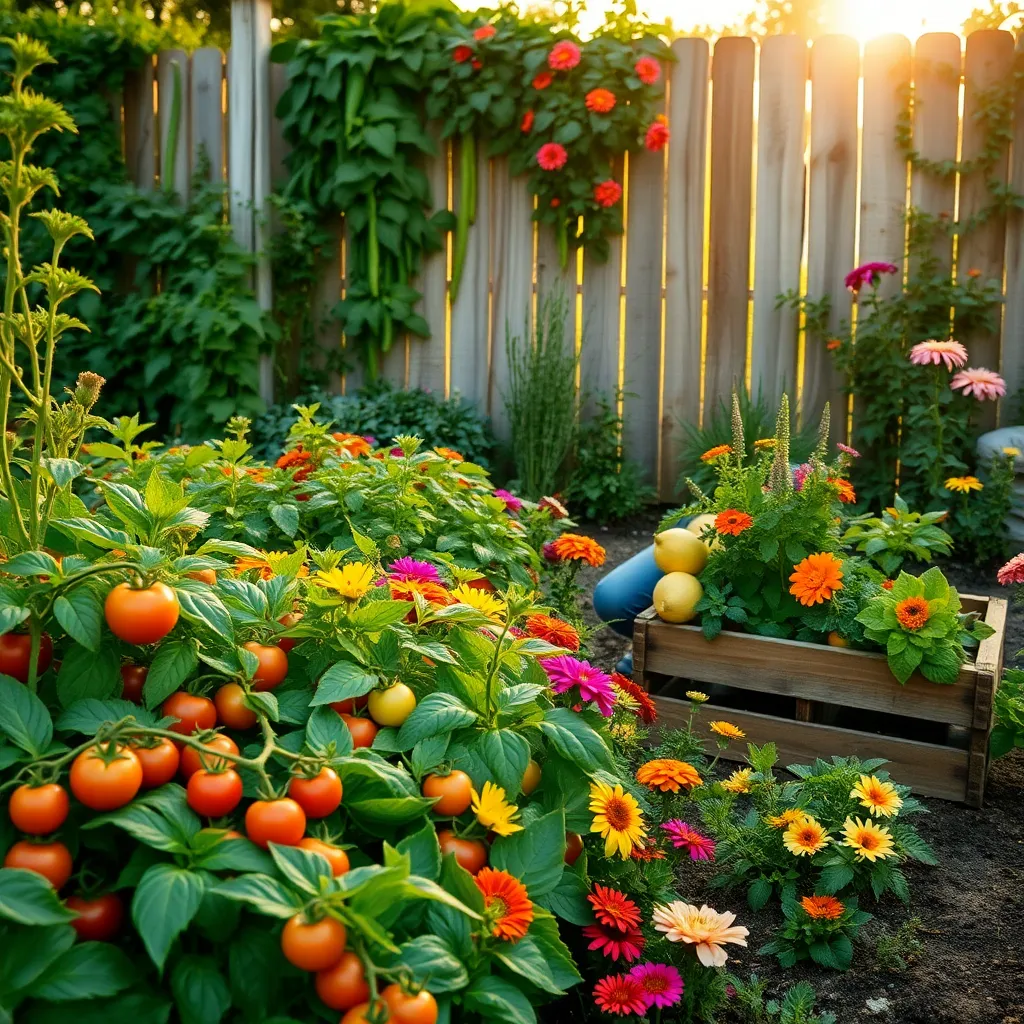
Companion planting is a powerful tool for boosting vegetable growth naturally by leveraging the symbiotic relationships between plants. By strategically placing certain plants together, you can enhance nutrient uptake, improve pest control, and increase yields without relying on synthetic chemicals.
For instance, planting marigolds alongside tomatoes can deter nematodes and other pests, promoting healthier tomato plants. Additionally, marigolds release a scent that repels harmful insects, acting as a natural pest repellent.
Consider incorporating legumes such as beans or peas into your vegetable garden to naturally enrich the soil with nitrogen. These plants have a unique ability to fix atmospheric nitrogen, converting it into a form that other plants can easily absorb.
Space your plants to optimize sunlight exposure and air circulation, which are crucial for robust plant growth. An open layout not only enhances photosynthesis but also reduces the risk of fungal diseases by allowing moisture to evaporate more quickly.
Watering your vegetables consistently is vital, yet overwatering can be detrimental. Aim for a steady watering schedule that maintains soil moisture without waterlogging, such as watering deeply once or twice a week, depending on rainfall and temperature.
For those seeking to refine their gardening skills, experiment with mulching to conserve soil moisture and suppress weeds. Organic mulches such as straw or shredded leaves can improve soil structure and add nutrients as they decompose.
Enhancing Pest Control Strategies
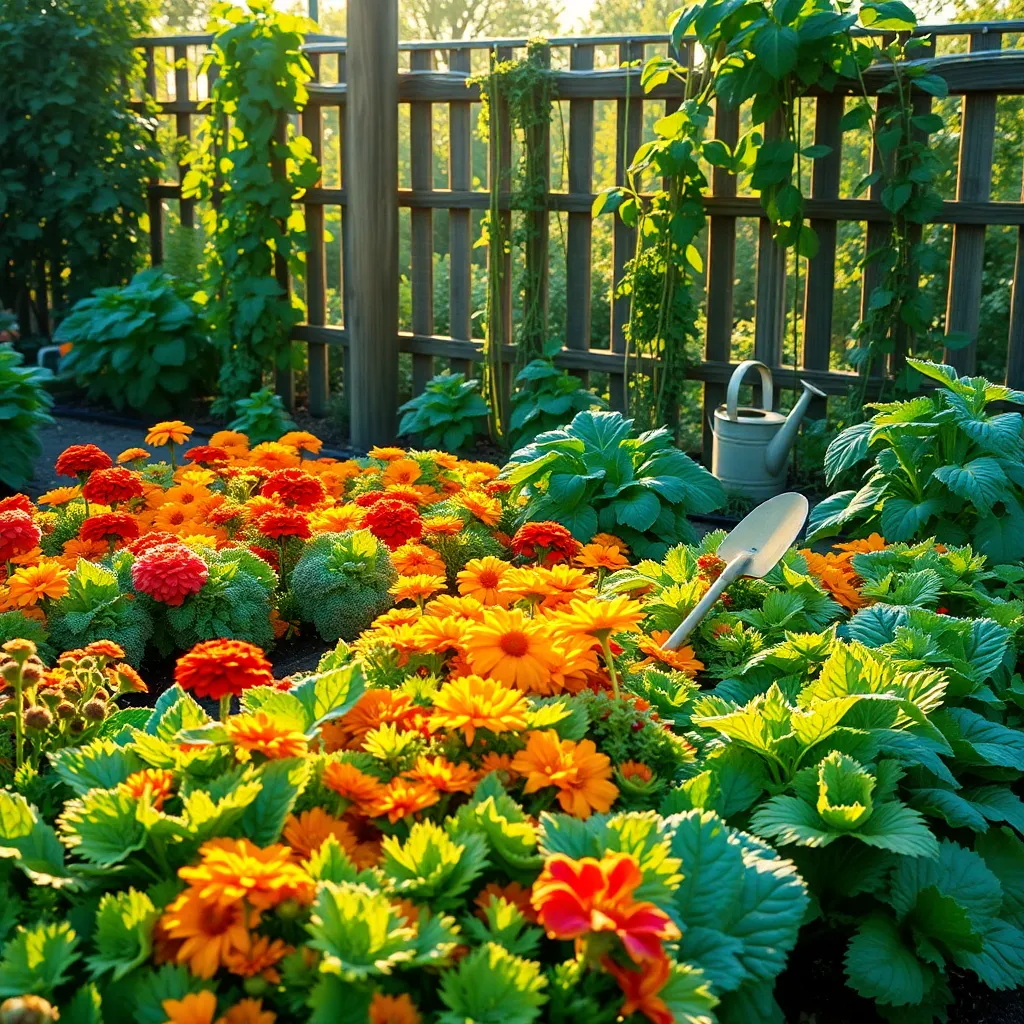
Companion planting plays a significant role in enhancing pest control strategies in vegetable gardens. By strategically placing certain plants together, gardeners can naturally deter pests without relying heavily on chemical pesticides.
For instance, planting marigolds alongside tomatoes can help repel nematodes, which are notorious for damaging tomato roots. The marigolds release a substance that is toxic to these pests, making them an effective natural deterrent.
Another effective combination is growing basil near your pepper plants. Basil not only enhances pepper flavor but also repels aphids and spider mites, providing a dual benefit for your garden.
Beginner gardeners should start by researching which plants work well together in their specific climate zone. Understanding local pest problems and the corresponding companion plants can lead to a more resilient and productive garden.
Experienced gardeners can experiment with advanced techniques like trap cropping, where a sacrificial plant is used to attract pests away from the main crops. This method requires careful planning and observation but can significantly reduce pest pressures when done correctly.
Regardless of your experience level, maintaining healthy soil with a balanced pH and adequate nutrients will enhance the effectiveness of companion planting. Healthy plants are naturally more resistant to pests, making them a crucial part of any pest control strategy.
Increasing Crop Yield Benefits
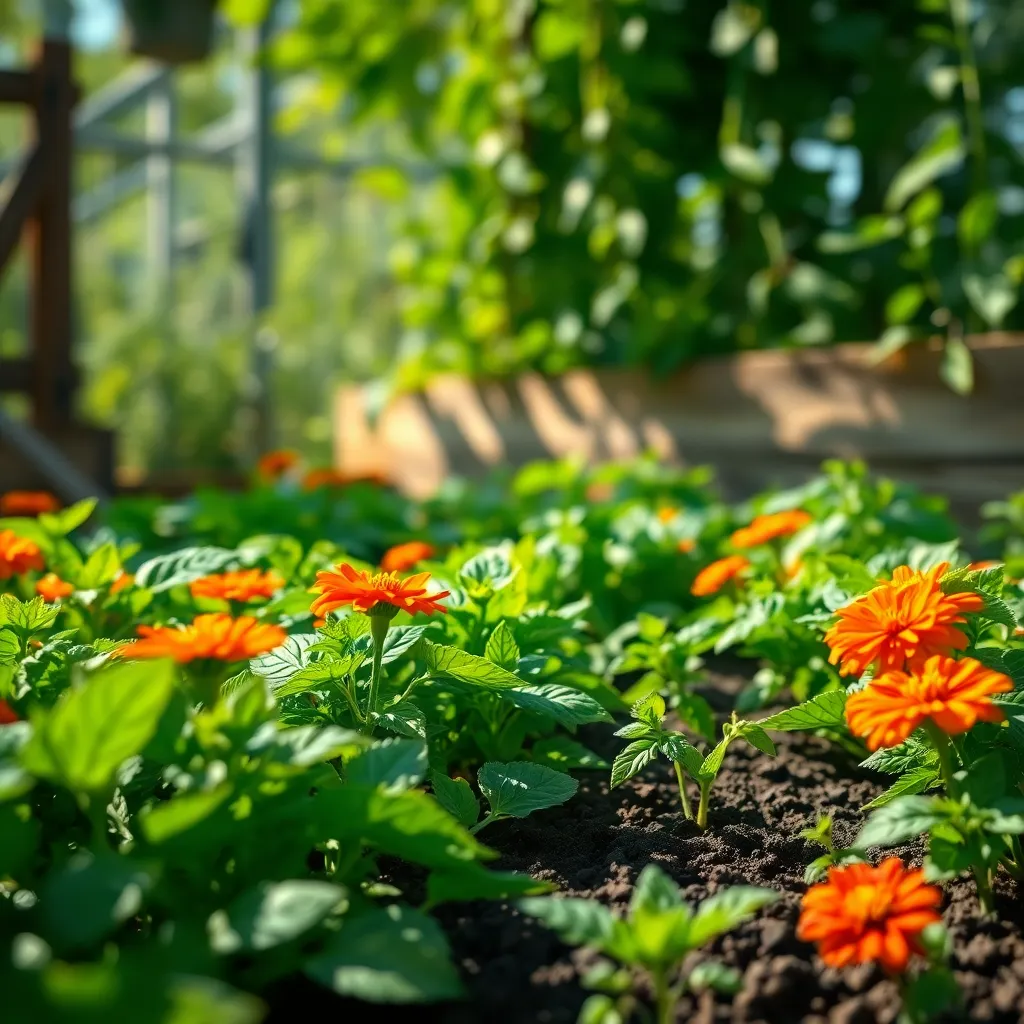
Companion planting can significantly increase crop yield by optimizing space and resources. By strategically pairing plants that grow well together, you can make the most out of your garden space, leading to a more abundant harvest.
For instance, planting fast-growing vegetables like radishes alongside slower-growing crops such as carrots can maximize your yield from a single plot. Beginners should aim to select combinations that naturally complement each other in terms of growth habits and nutrient needs.
Experienced gardeners might consider using legumes as companion plants to naturally enrich the soil with nitrogen, benefiting neighboring crops. This practice not only boosts yield but also reduces the need for synthetic fertilizers, making your garden more sustainable.
To further enhance yield, ensure that companion plants are compatible in terms of sunlight and water needs. For example, pairing leafy greens that prefer partial shade with taller plants can create beneficial microclimates, improving the overall health of your garden.
Improving Soil Health Synergies
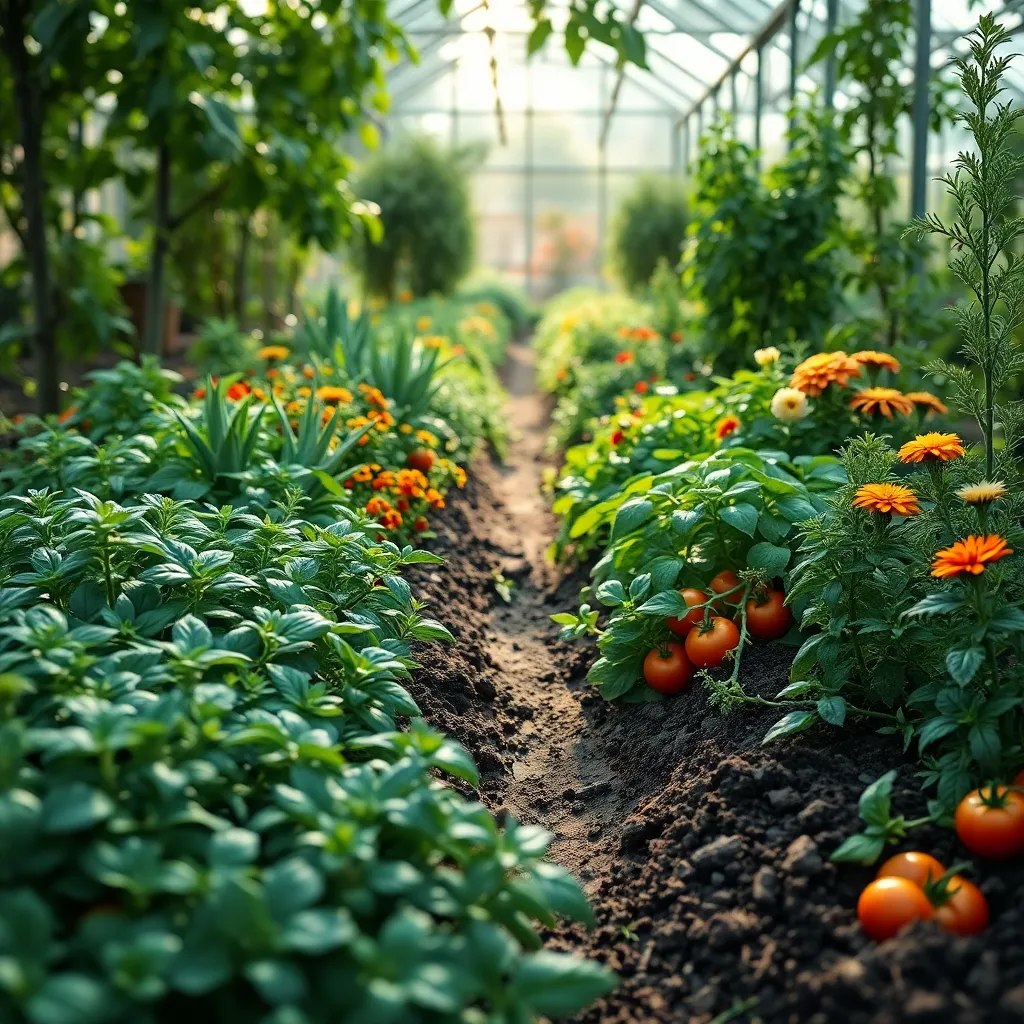
Improving soil health is a fundamental aspect of successful companion planting. By pairing certain plants together, you can naturally enhance the soil’s nutrient profile, leading to more robust vegetable growth.
One effective method is to plant legumes, such as peas or beans, alongside heavy feeders like tomatoes or corn. Legumes have the unique ability to fix nitrogen in the soil, providing essential nutrients that benefit neighboring plants.
Consider incorporating deep-rooted plants, such as carrots or parsnips, with shallow-rooted ones like lettuce. This arrangement maximizes soil utilization and helps to aerate and improve the soil structure over time.
For gardeners looking to add organic matter and increase soil fertility, growing cover crops like clover or vetch is an excellent choice. These plants can be tilled back into the soil, enriching it with organic matter and improving its capacity to retain moisture.
To maintain optimal soil health, ensure that your garden beds are well-drained and have a balanced pH. Regularly test your soil and adjust with organic amendments like compost or lime, as needed, to support the diverse needs of your companion plants.
Fostering Biodiversity in Gardens

Companion planting is a powerful tool for fostering biodiversity in your garden. By strategically arranging different plants together, you can create a rich ecosystem that supports a variety of beneficial insects and wildlife.
Diversifying your plant selection is key to achieving this goal. Including a mix of flowers, herbs, and vegetables not only enhances the garden’s aesthetic appeal but also attracts pollinators like bees and butterflies.
Planting native species can further enhance biodiversity, as these plants are well-adapted to the local environment and support native wildlife. For example, consider incorporating milkweed to attract monarch butterflies or echinacea to draw in bees.
To maintain a healthy balance, ensure proper soil conditions for each type of plant. Most vegetables thrive in well-drained, fertile soil with a neutral pH, while some flowers may prefer slightly acidic conditions.
Watering is another important aspect of fostering a diverse garden. Group plants with similar watering needs together to avoid over or under-watering, which can stress plants and reduce biodiversity.
Advanced gardeners might experiment with creating microhabitats within their gardens. For instance, a small water feature can attract amphibians, while a rock pile provides shelter for beneficial insects like ground beetles.
- Plant a variety of native flowers to support local pollinators.
- Create a balance of sun and shade-loving plants for varied habitats.
- Practice crop rotation to maintain soil health and reduce pest buildup.
- Consider leaving some areas of the garden undisturbed to provide refuge for wildlife.
Conclusion: Growing Success with These Plants
As we’ve explored, the advantages of companion planting for vegetables extend far beyond the garden bed, offering insightful parallels to nurturing strong relationships. First, we saw how diversity enhances growth, much like a variety of experiences enrich a relationship. Then, we delved into the importance of protection, where partners shield each other from life’s harsh elements. Next, we highlighted the power of mutual support, underscoring how giving and receiving bolster both plants and partnerships. Fourth, we examined the role of communication, where understanding needs ensures thriving connections. Lastly, we celebrated resilience, recognizing that overcoming challenges together strengthens bonds.
Now, take a moment to reflect on these principles and apply them to your relationships. Start by identifying one area where you can introduce more diversity or support.
To ensure these insights remain at your fingertips, bookmark this article for future reference. As you integrate these principles, may your relationships flourish like a well-tended garden. Remember, the seeds you plant today can lead to a lifetime of growth and happiness. Embrace these strategies, and watch your relationships blossom into their fullest potential.

